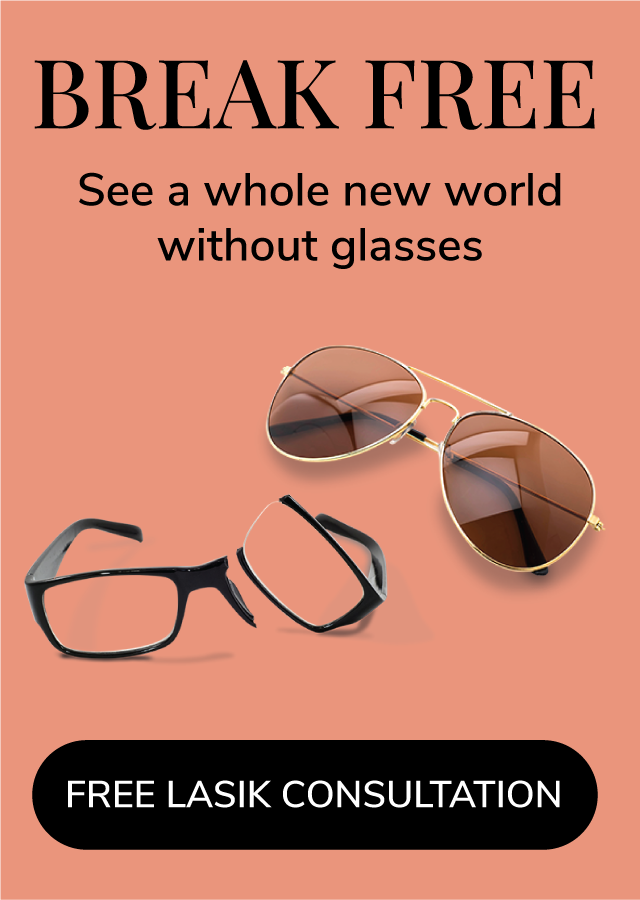Dry eyes occur when your tears can’t provide enough lubrication for your eyes. Tears function to keep the eye’s surface moist and wash away dust, debris, and other microorganisms. The results of dry eyes can lead to inflammation and damage to the eye’s surface.
SYMPTOMS
Symptoms can include:
- A burning or scratchy sensation in your eyes
- Sensitivity to light
- Eye redness and irritation
- Difficulty wearing contact lenses
- Watery eyes
- Blurred vision
- Eye fatigue
Dry eyes are bothersome and uncomfortable. Certain situations can exacerbate symptoms, like staring at a computer screen for too long, spending time in an air-conditioned room, or being on an airplane.
CAUSES
There can be several reasons for dry eyes, along with risk factors that make it more likely you’ll experience dry eyes.
- Ageing – dry eyes can occur at any age but become more likely after the age of 50.
- Hormonal changes – post-menopausal women experiencing fluctuating hormones during and after pregnancy can be more susceptible to dry eye syndrome.
- Health conditions – certain autoimmune diseases like lupus, arthritis, and diabetes can contribute to dry eyes.
- Medications – some prescriptions can increase the risk of dry eyes, including antihistamines, antidepressants, blood pressure medications, and birth control pills.
- Allergies – allergies can cause dry eyes as well as antihistamines used to relieve allergies
- Contact lenses – wearing contacts or having a history of refractive surgery can cause dry eye syndrome. This is especially true when people misuse their contact lenses, wearing them for more extended periods than prescribed, wearing them to sleep, etc.
TREATMENT
The treatment for dry eyes will depend on the cause and severity of the condition. In most cases, you can successfully manage dry eyes with a straightforward treatment like lubricating eye drops.
For milder cases of dry eyes, you can continuously use artificial tears. Over-the-counter eye drops are available in a variety of products ranging from low to high viscosities. Low viscosity drops are typically thin and watery, providing short-term relief. Higher viscosity drops are thick and provide longer-lasting relief but can also blur your vision for a brief period.
You can also use warm compresses to relieve dry eyes as it helps to open clogged glands. This treatment should be applied for at least 10 minutes, twice a day, to work effectively.
You can also use nutritional supplements to treat dry eyes. Omega-3 fatty acids are known to have significant anti-inflammatory effects on the body and can be helpful to ocular health. You can incorporate omega-3 fatty acids into your diet by eating fish like salmon, cod, and herring. Or you can take supplements of omega-3 in triglyceride form.
You can also consider more aggressive, invasive treatments with your optometrist. Punctal plug insertion, for example, is where a small, sterile device is inserted into one of the small openings of tear drainage ducts to prevent tears from draining away from the eye. Intense pulsed light treats ocular rosacea using filtered light that can be absorbed by dilated blood vessels.
If you wear contact lenses, you may want to discontinue wearing them to see if your condition improves. If you dislike wearing glasses, you might consider LASIK surgery for the freedom to live without glasses or contacts. It’s a transformation that will help you see the world differently – book your free consultation today.
![Corvue-Horizontal-Logo-gradient[rgb]-black-text Corvue-Horizontal-Logo-gradient[rgb]-black-text](https://corvue.ca/app/uploads/2017/10/Corvue-Horizontal-Logo-gradientrgb-black-text.png)

